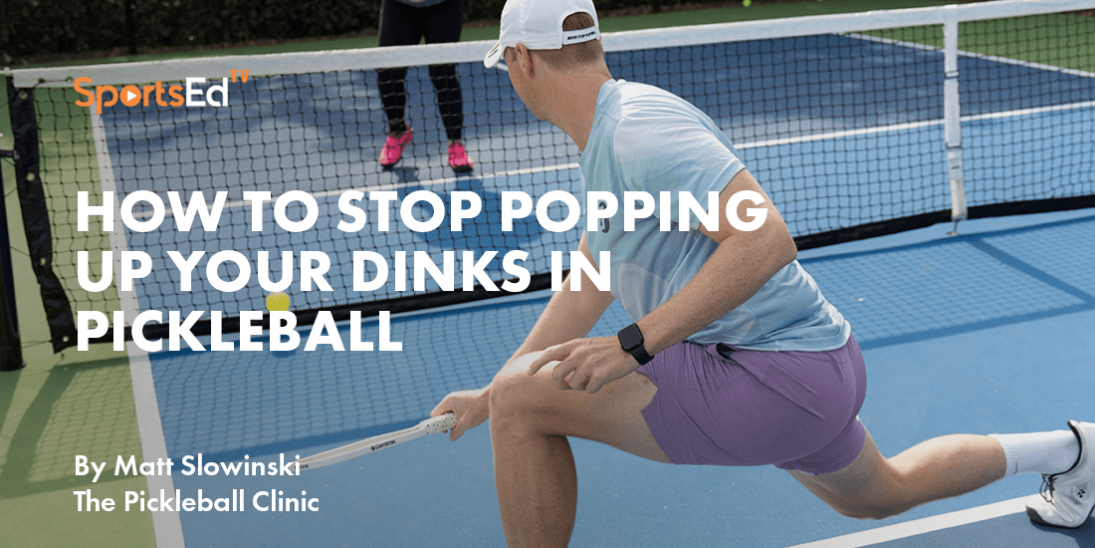Pickleball
Welcome and thanks for visiting...

The 5 Worst Backhand Dink Mistakes in Pickleball

Are you struggling with your backhand dink in pickleball? If so, you might be making one (or more) of the five most common backhand dink mistakes. The backhand dink is a crucial shot to master for any player looking to elevate their game. A consistent backhand dink can become a powerful weapon, even creating offensive opportunities. Let’s break down these five mistakes so you can refine your technique and build confidence on the court.
1. Cutting the Ball Too Much
One of the most common mistakes players make is cutting the ball with a high-to-low-to-high swing. While players often aim to create spin, this exaggerated cutting motion leads to pop-ups that opponents can easily attack. The ball ends up too high, travels beyond the kitchen, and gives opponents an easy opportunity to blast it back, especially cross-court.
Instead of a massive cut, focus on opening your paddle face and swinging in a straight line. Start from directly behind the ball with an open paddle face and swing straight through to your target. This method provides control and just enough backspin without sacrificing consistency. By simplifying your motion, you’ll avoid the dreaded high pop-ups and keep your shots shorter, making them harder to attack.
Key Tip: Spin comes from an open paddle face, not from an aggressive chopping motion. When you rely on a smooth, straight swing, you’ll generate all the spin you need while maintaining control.
2. Bending the Elbow
Another frequent mistake is using a bent elbow during the swing. When the elbow bends, players often chop at the ball, leading to a lack of control. A bent elbow introduces unnecessary movement and acceleration, which can cause mis-hits or over-hits.
Instead, focus on keeping your elbow perfectly straight throughout the entire shot, no matter what type of dink you’re hitting. The motion should originate entirely from your shoulder. Your paddle should finish at shoulder height, maintaining a straight line from your shoulder to your paddle. This consistency helps you avoid extra moving parts, which can lead to mistakes.
Key Tip: Imagine a line from your shoulder to your paddle. Keep this alignment consistent for a smoother and more reliable swing.
3. Improper Wrist Position
Many players start with their wrist in the wrong position, leading to instability and inconsistency. A common mistake is holding the wrist flat or neutral, which makes it challenging to get under the ball and lift it properly. This often results in rolling over the ball, causing shots to drop into the net or lose control.
To fix this, bend your wrist slightly back and cock it upwards. This adjustment allows you to lift the ball effectively without rolling over it. Your wrist should stay locked in this position throughout the swing. Avoid flicking your wrist, as this introduces too much speed and unpredictability, resulting in inconsistent shots.
Key Tip: Your paddle tip should stay above your wrist during the swing. A dropped paddle tip compromises control and prevents you from effectively lifting the ball.
4. Poor Footwork
Even with a perfect swing, poor footwork can ruin your backhand dink. Planting your feet or failing to move leads to reaching for the ball, which compromises your shot. When you’re out of position, it’s easy to flick, chop, or slice the ball unintentionally.
Instead, use your feet to get behind the ball and find your ideal contact point—typically just inside your outside foot. Move side to side like a crab, staying low and balanced to maintain consistency. Every dink should be hit from your ideal contact point, so adjust your footwork to ensure you’re in position.
Practice this by setting up a drill where a partner tosses balls cross-court. Slide into position and catch the ball at your ideal contact point. Once comfortable, replicate the motion with your paddle.
Key Tip: Good footwork ensures you’re in the right position to execute a consistent and controlled dink.

5. Standing Upright
Standing too upright when executing a backhand dink prevents you from getting under the ball effectively. This mistake often results in shots that go straight into the net. If you’re upright, your paddle tip naturally faces downward, making it difficult to lift the ball.
Instead, bend your knees to match the ball’s height. This deep knee bend allows you to stay balanced and keep your paddle face open, enabling you to lift the ball effectively. Avoid bending from your back, which throws you off balance and limits your ability to execute a proper dink.
Key Tip: A deep knee bend keeps you balanced and allows you to lift the ball with precision. Adjust your posture so you’re low enough to swing under the ball comfortably.
Bonus Mistake: Over-Rolling on Two-Handed Backhand Dinks
If you’re ready to add a two-handed backhand dink to your game, avoid rolling over the top of the ball to create topspin. Many players make this mistake, thinking it will generate more spin. In reality, rolling over the ball forces it downward and reduces control.
Instead, focus on coming from under the ball and swinging up its back. Keep your paddle face directed toward your target and follow through up to your shoulder. This motion generates topspin naturally without sacrificing control.
Key Tip: Focus on lifting the ball with an upward motion rather than forcing topspin by rolling over.
Master Your Backhand Dink
By avoiding these common mistakes and practicing the correct techniques, you can transform your backhand dink into a reliable and effective shot. Remember to keep your swing simple and controlled, use your feet to position yourself behind the ball, and maintain proper body posture. With dedication and consistent practice, your backhand dink can become a formidable asset in your pickleball arsenal. Whether you’re working on a one-handed or two-handed backhand dink, mastering these fundamentals will elevate your game to the next level.








